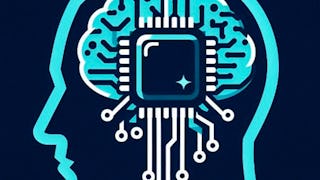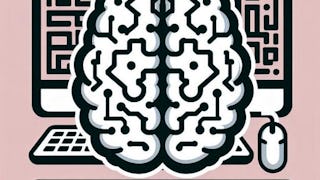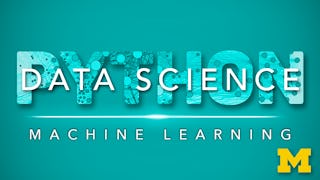By the end of this course, learners will be able to apply clustering algorithms, implement Naive Bayes classifiers, analyze text with supervised learning models, reduce dimensionality with PCA, and design foundational neural networks. They will also evaluate time series patterns, forecast using ARIMA and Prophet, optimize predictive performance with gradient boosting, and uncover associations through market basket analysis.



Advanced Machine Learning with R: Apply & Predict
This course is part of AI Machine Learning with R & Python Projects Specialization

Instructor: EDUCBA
Access provided by Woxsen University
What you'll learn
Apply clustering, Naive Bayes, PCA, and neural networks in R.
Forecast time series with ARIMA, Prophet, and boosting methods.
Implement market basket analysis and optimize predictive models.
Skills you'll gain
Details to know

Add to your LinkedIn profile
16 assignments
October 2025
See how employees at top companies are mastering in-demand skills

Build your subject-matter expertise
- Learn new concepts from industry experts
- Gain a foundational understanding of a subject or tool
- Develop job-relevant skills with hands-on projects
- Earn a shareable career certificate

There are 4 modules in this course
This module introduces unsupervised and probabilistic learning methods in R, focusing on clustering with K-Means and classification with Naive Bayes. Learners explore how to group unlabeled data into meaningful clusters and apply Bayes’ theorem to text and categorical data. Practical examples in R reinforce understanding of cluster visualization, probability computations, and classification accuracy.
What's included
12 videos3 assignments1 plugin
This module explores advanced supervised learning techniques in R, including text mining with Naive Bayes and classification with Support Vector Machines. Learners analyze word frequency patterns, build document-term matrices, and develop spam detection models. They further master SVM concepts such as linear and nonlinear classification, the kernel trick, and RBF applications for optical character recognition (OCR).
What's included
9 videos3 assignments
This module focuses on techniques to simplify complex datasets and build predictive models with neural networks. Learners explore feature selection and extraction methods, apply Principal Component Analysis (PCA), and interpret eigenvalues and eigenvectors in R. The module concludes with neural network foundations, covering activation functions, topology, and weight adjustment for adaptive learning.
What's included
17 videos4 assignments
This module integrates advanced applications of machine learning in R, including time series forecasting, boosting methods, and market basket analysis. Learners develop forecasting models, apply ARIMA and Prophet for stock prediction, and implement gradient boosting to improve accuracy. The module concludes with association rule mining and an overview of emerging machine learning trends.
What's included
42 videos6 assignments
Earn a career certificate
Add this credential to your LinkedIn profile, resume, or CV. Share it on social media and in your performance review.
Why people choose Coursera for their career




Explore more from Data Science

Johns Hopkins University

Fractal Analytics

Johns Hopkins University

University of Michigan

